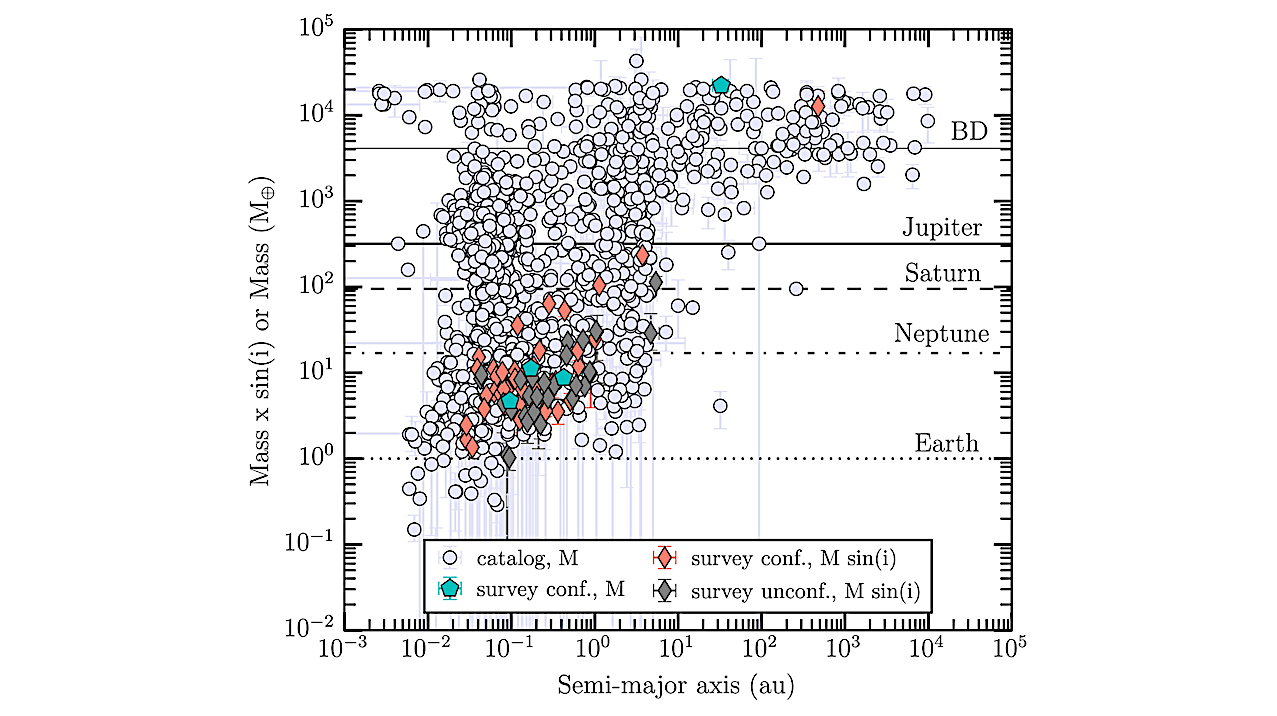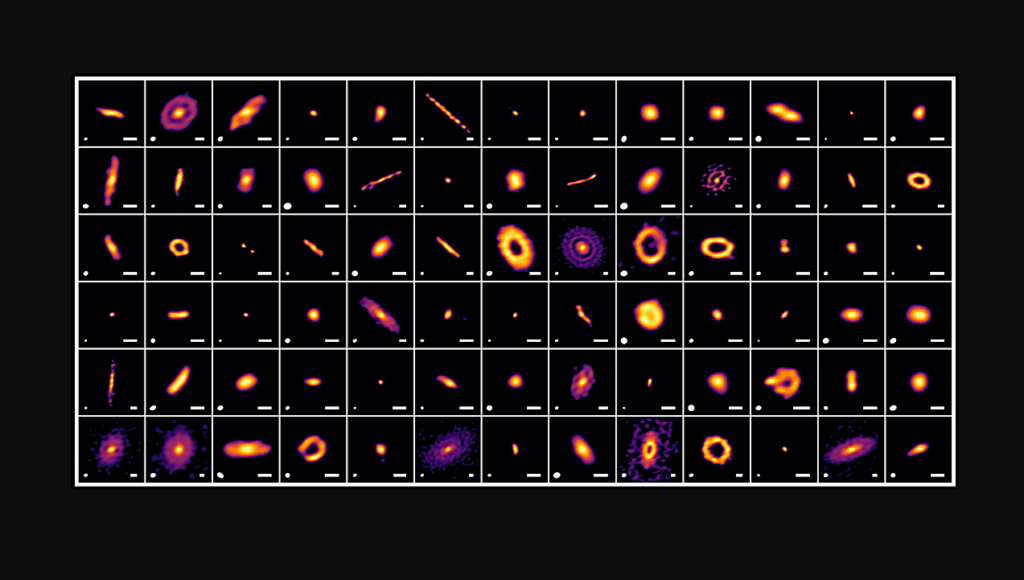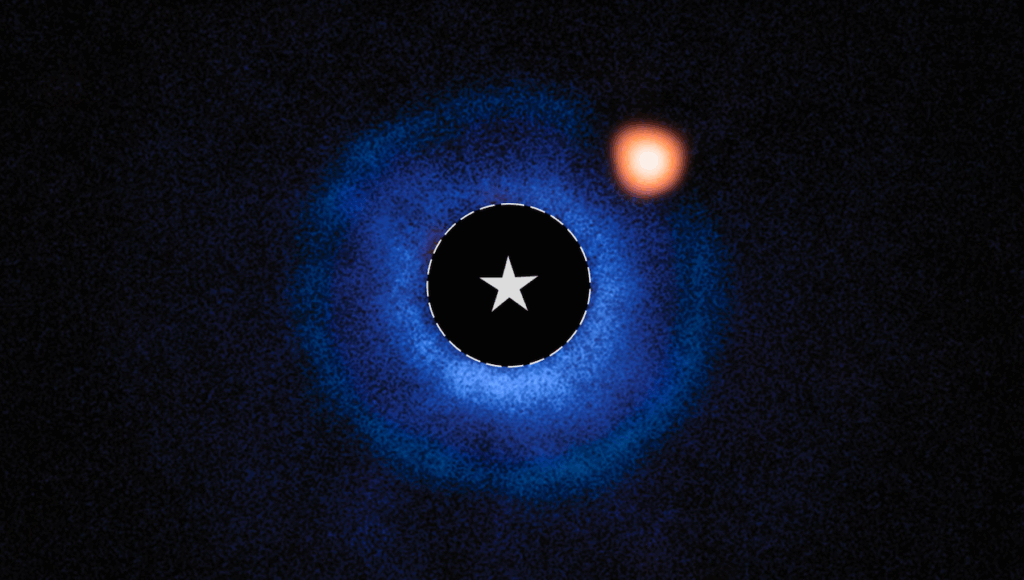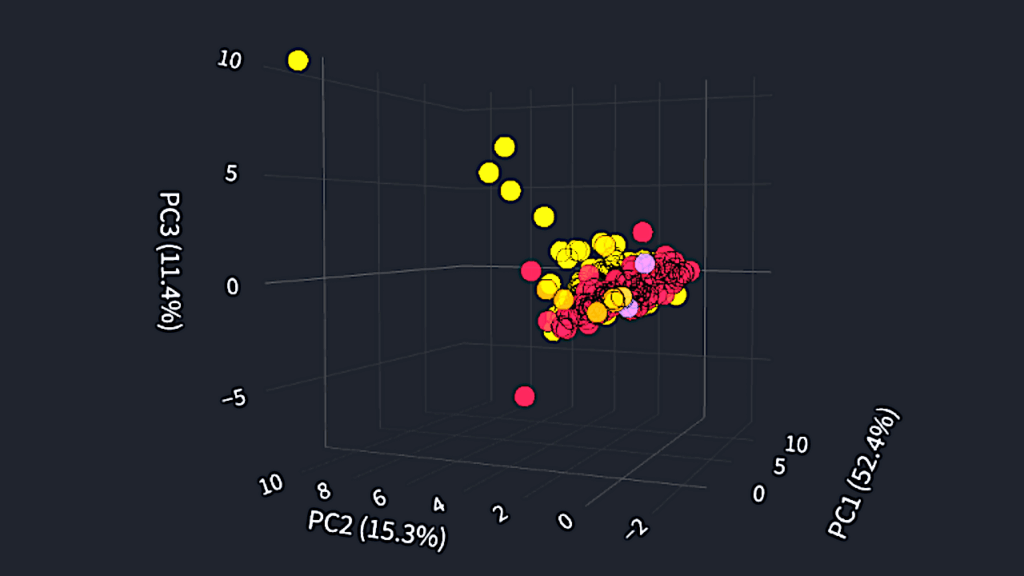Planetary System Architectures With Low-mass Inner Planets: Direct Imaging Exploration Of Mature Systems Beyond 1 AU

The discovery of planets orbiting at less than 1 au from their host star and less massive than Saturn in various exoplanetary systems revolutionized our theories of planetary formation.
The fundamental question is whether these close-in low-mass planets could have formed in the inner disk interior to 1 au, or whether they formed further out in the planet-forming disk and migrated inward. Exploring the role of additional giant planets in these systems may help us to pinpoint their global formation and evolution.
We searched for additional substellar companions by using direct imaging in systems known to host close-in small planets. The use of direct imaging complemented by radial velocity and astrometric detection limits enabled us to explore the giant planet and brown dwarf demographics around these hosts to investigate the potential connection between both populations. We carried out a direct imaging survey with VLT/SPHERE to look for outer giant planets and brown dwarf companions in 27 systems hosting close-in low-mass planets discovered by radial velocity.
Our sample is composed of very nearby (<20pc) planetary systems, orbiting G-, K-, and M-type mature (0.5-10Gyr) stellar hosts. We performed homogeneous direct imaging data reduction and analysis to search for and characterize point sources, and derived robust statistical detection limits. Of 337 point-source detections, we do not find any new bound companions. We recovered the emblematic very cool T-type brown dwarf GJ229B. Our typical sensitivities in direct imaging range from 5 to 30 MJup beyond 2 au. The non-detection of massive companions is consistent with predictions based on models of planet formation by core accretion. Our pilot study opens the way to a multi-technique approach for the exploration of very nearby exoplanetary systems with future ground-based and space observatories.

Overview of the 27 systems in our sample. The planets are represented in orange if the minimal mass is used to scale the circle radius, in blue (HD 136352) if the absolute mass is used instead. On the right image, we added the unconfirmed planets in gray. We indicate the expected locations of the known debris disk(s) with red horizontal rectangles, with two possible structures for 61 Vir and HD 38858, either a single-belt or a two-belt (darker region only) architecture. For the host star, the color code is the same than in Fig. 2, and the bigger the star marker is, the higher the stellar mass. The references for each system (star, planet, debris disk and/or binary companion) are indicated in Appendix A. — astro-ph.EP
Celia Desgrange, Julien Milli, Gael Chauvin, Thomas Henning, Anna Luashvili, Matthew Read, Mark Wyatt, Grant Kennedy, Remo Burn, Martin Schlecker, Flavien Kiefer, Valentina D’Orazi, Sergio Messina, Pascal Rubini, Anne-Marie Lagrange, Carine Babusiaux, Luca Matra, Bertram Bitsch, Mariangela Bonavita, Philippe Delorme, Elisabeth Matthews, Paulina Palma-Bifani, Arthur Vigan
Comments: 49 pages including 31 pages of appendices and references, 31 figures, A&A, accepted
Subjects: Earth and Planetary Astrophysics (astro-ph.EP)
Cite as: arXiv:2310.06035 [astro-ph.EP] (or arXiv:2310.06035v1 [astro-ph.EP] for this version)
https://doi.org/10.48550/arXiv.2310.06035
Focus to learn more
Submission history
From: Célia Desgrange
[v1] Mon, 9 Oct 2023 18:00:06 UTC (24,538 KB)
https://arxiv.org/abs/2310.06035
Astrobiology








